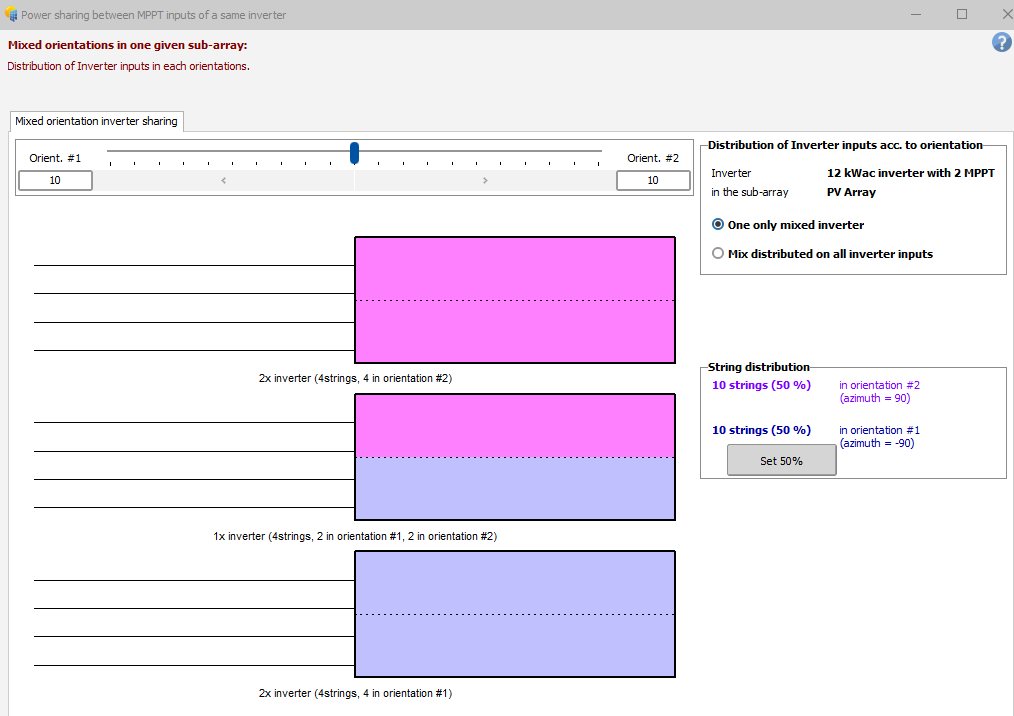Mixed orientations
A sub-array is usually connected to only one orientation, meaning that all strings in this sub-array share the same orientation.
In some specific cases, it might be necessary to attribute two orientation to a single sub-array. For example:
- To connect strings having different orientations to a single MPPT input (e.g in small BIPV system)
- To share the inverter's available power throughout the day when strings have different orientations (e.g. with domes, the maximum power will not be reached at the same moment on both sides).
By defining 2 orientations in your sub-array, it is possible to connect strings of different orientations on a single MPPT input.
In PVsyst, if two or more orientation are defined, it is possible to attribute a second orientation to a sub-array: 
A dedicated menu box will then ask how many strings are attributed to each orientation. Depending on the number of strings, the interface wil either display a scroll bar or two text boxes. 
If you have several MPPT inputs in the sub-array, there are two possible configurations (open button Orient distrib.):
- All inverters mixed : each MPPT inputs will share strings of both orientations. This is the mode suited for sharing the power along the day (e.g. domes).
- One inverter mixed : MPPT inputs will be connected to strings with the same orientation in priority (orientation #1 or #2). If necessary one "central" MPPT input will have strings from both orientations.
Mismatch calculation
PVsyst provides a dedicated tool Electrical behaviour of PV arrays to visualize the how mismatched orientation or strings impacts the overall production.
Mismatch between strings
Mixing strings is possible because the connection in parallel of strings of similar voltage leads to very little mismatch losses. Even when high, the current differences (irradiance level and number of strings in each orientation) do not produce any mismatch. The differences in voltage (due to temperature in different orientations) may lead to very little mismatch. During the simulation, PVsyst calculates the resulting array power by mixing the I/V curves of both orientations, and evaluates the mismatch loss. This appears on the loss diagram. It is insignificant (less than one or few permille) on the annual result.
Mismatch within a string (Heterogeneous strings)
When modules are in different orientations within a same string, the mismatch in current is very important: the string current is limited to the lowest cell current. You can overcome this problem by using optimizers: the current in the less irradiated cell is maintained at the common string current, by diminishing the voltage.
PVsyst doesn't treat the Heterogeneous strings in the present time. Although this is claimed as possible by the optimizer manufacturers, this represent a big development work, which is on our roadmap for a future version.
